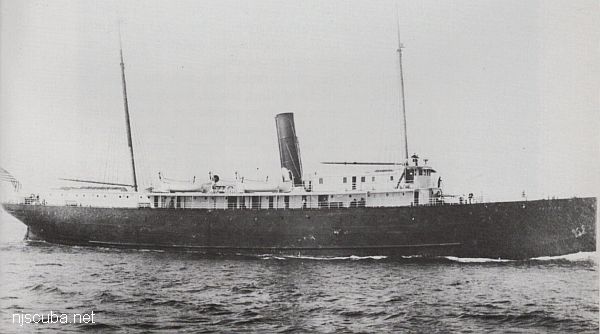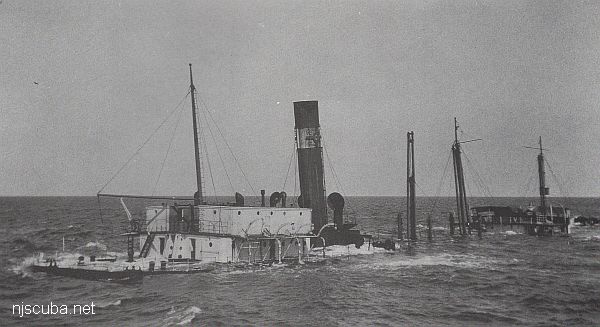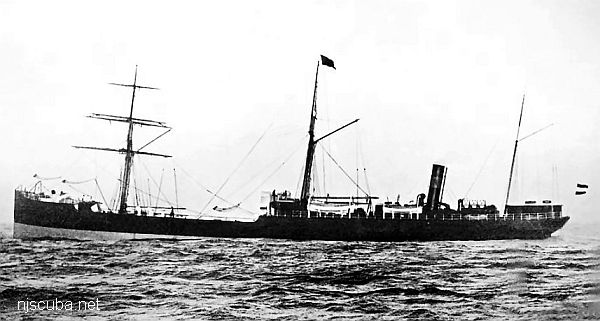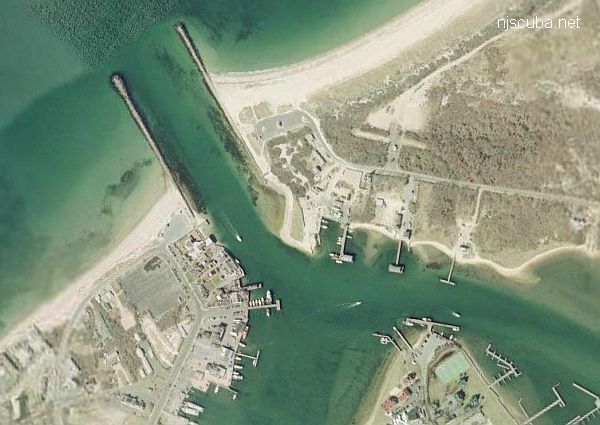Long Island East Dive Sites (2/4)

- Type:
- shipwreck, freighter, USA
- Built:
- 1899, Harlan & Hollingsworth, Wilmington DE USA
- Specs:
- ( 263 x 29 ft ) 2825 tons, 34 crew
- Sunk:
- Friday May 27, 1932
collision with SS City of Chattanooga - 4 casualties - Depth:
- 95 ft
More: Grecian ...
- Type:
- shipwreck, tugboat, USA
- Specs:
- ( 113 ft ) 8 crew
- Sunk:
- Sunday March 3, 1985
collision with one of its own barges - no casualties - Depth:
- 230 ft
More: John A. Downs ...

- Type:
- shipwreck, schooner barge, USA
- Built:
- 1892, Frank W. Wheeler & Co, West Bay City MI USA
- Specs:
- ( 242 x 39 ft ) 1277 gross tons, 5 crew
- Sunk:
- Friday April 3, 1903
holed by explosion - 5 casualties - Depth:
- 130 ft
More: John C. Fitzpatrick ...

- Type:
- shipwreck, steamer, USA
- Built:
- 1885, Goss & Sawyer, Bath ME USA
- Specs:
- ( 252 x 37 ft ) 1605 tons, 351 passengers & crew
- Sunk:
- Monday February 11, 1907
collision with schooner Harry Knowlton - 334 casualties - Depth:
- 140 ft
huge paddlewheels; wooden hull draped with fishing nets; hazardous currents & poor viz.
More: Larchmont ...

- Type:
- shipwreck, tanker, USA (Texaco)
- Built:
- 1919, Texas Steamship Company, Bath ME USA
- Specs:
- ( 432 x 56 ft ) 6429 tons, 37 crew + dog
- Sunk:
- Friday February 10, 1939
ran aground on Block Island - no casualties - Depth:
- 30 ft
More: Lightburne ...
Long Island Sound averages 60 ft in depth, with the greatest depth of over 300 ft at the eastern end. Tidal effects are strongest at the narrow western end, where all the inrushing water flow piles up and makes tidal variations of up to 7 ft. Strong tidal currents are also prevalent, and visibility tends to be poorer than the open ocean, especially at depth.
More: Long Island Sound Dive Sites Chart ...

- Type:
- shipwreck, freighter, USA
- Built:
- 1907, Bethlehem Quincy, Quincy MA USA
- Specs:
- ( 373 x 52 ft ) 5054 gross tons, 42 crew
- Sunk:
- Sunday September 19, 1921
collision with SS Jonancy - no casualties - Depth:
- 40 ft
More: Malden ...





